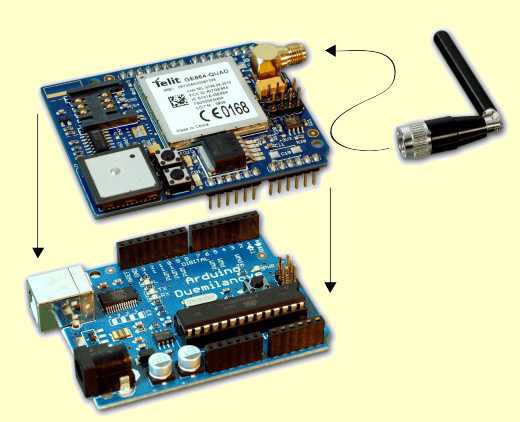IOT – AVLÂ Smart Home – AAL -M2M – M2M2P
Name it what ever you like. In the end the device will need some kind of micro controller to run your code. Google selected the Arduino and its clones for the Android@Home. All of Microchip Arduino Clones comes with Android accesory libaries.
Table with Arduino´s
The prices at the table are catched in November 2011 on Internet. The BUDGETARY prices of Microchip you can get by using their Microchip Advanced Part Selector . The parameters of the Microchip micro controllers are picked by cut and paste. The technical data of the ATMEL are a manual selection from the website of ATMEL. Please excuse mistakes. Any hint on mistakes are welcome.
The Arduino´s in the table and a long list of further Arduino clones are supported by adapter boards with wireless modules. The origin Arduino´s are on 5 Volt. All clones I have seen are on 3 Volt. The GSM/GPS adapter and further I will make public will support 5 Volt and 3 Volt CMOS level. A basic Arduino has one UART and one SPI only. Later versions or clones offer more serial interfaces. Nevertheless one UART you can drive one wireless module normally only. With the SPI it is close the same. The new generation of adapters listed here (also called shields) are supporting some kind of multiplexing. Based on this feature it is possible to build “sandwiches” of several adapter PCBs on top of an Arduino. Arduino´s are cheap. The clones are even cheaper. The Ardunio clones of Microchip together with GSM/GPS adapter build the cheapest evaluation kits for AVL (Automatic Vehicle Location) the world ever have seen. My ignoring the GPS you get a inexpensive telemetry playground. Everything is open source. Everybody can copy it. Last but not least it is supported by engineering offices to redesign the Arduino plus adapter board to one industrial PCB with switched DC/DC regulator for example. The benefit is that the software development on Arduino plus adapter can be processed parallel to the hardware development.
Arduino with GSM/GPS adapter
If you are interested in a your own IOT, AVL, Smart Home, AAL, M2M or M2M2P solution, then send an email to harald.naumann (at) gsm-modem.de or give me a call at +49-1755774832. I will present you my experience (25 year in radio / 15 years in GSM and GPS). On request you can get references to wireless projects for all over the world. Thank you in advance for any challenge.

1 Comment
Add a Comment